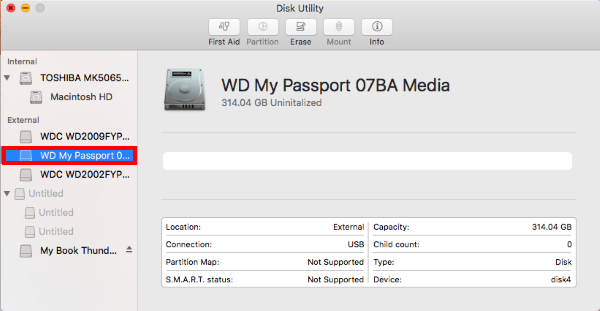Wd My Book How To Reformat For Mac
So, you just bought an external hard drive and wanted to use it on your Mac. But somehow, macOS doesn't allow you to write data to the drive. That's all because it's been initialized with Windows NT File System (NTFS), which is primarily for PCs. Apple Mac machines support a different file system. In this post, I'm going to show you how to format your external drive for a Mac compatible file system i.e. Mac OS Extended (Journaled). Just follow this easy step-by-step guide and you're all set.
Important note: If you have useful files stored on the external drive, be sure to copy or transfer them to another safe place prior to formatting. The operation will erase all data and your files will be gone for good. You could use a recovery program like to retrieve them, but the odds of recovery vary. Pro tip: If your external drive has a large volume, like mine - a 2TB Seagate Expansion - I highly recommend you also create multiple partitions. I'll also show you how to do that below.
Most External Hard Drives Are Initiated with NTFS During the last several years, I've used several removable drives, including a 500GB WD My Passport, 32GB Lexar flash drive, and a few others. Three weeks ago, I bought a brand new to backup my MacBook Pro before I updated to the latest macOS, 10.13 High Sierra (also see I encountered). When I connected the Seagate to my Mac, the drive icon showed up like this. What is NTFS? I'm not going to explain here; you can read more on. The problem is that on macOS, you can't work with files saved on an NTFS drive unless you use a paid app. How to Format an External Drive to Work with Mac (from NTFS to Mac OS Extended)?
How to Reformat a WD External Hard Drive. Reformatting Your Western Digital On a Mac. Plug your Western Digital external hard drive into your computer using the USB cable that came with drive. Open Disk Utility, which is located in 'Applications' and then 'Utilities.'
Note: The tutorial and screenshots below are based on macOS Sierra 10.12.5. They might be different if your Mac has a different version.
Step 1: Open Disk Utility. The quickest way to do this is a simple Spotlight search (click the search icon on the upper right corner), or go to Applications Utilities Disk Utility. After clicking 'Partition', you'll see this window.
Located on the left is a big blue circle with the name of your external drive together with its volume size. What you need to do next is click the add '+' button to increase the number of partitions on your external disk. Then allocate the desired volume to each partition. You can do that by clicking the small white circle and dragging it around. After that, you can rename each partition and define a file system for it.
Step 3: Confirm your operation.
Hello all, I am switching completely from mac to windows. The backup drives I have are 3tb My Book’s for mac. Does this mean that they cannot be converted to windows? Every time I go to Disk Utility and erase, the only (non MAC) option I have is “exFAT”. But when I choose exFAT, it gives me an error message. I don’t necessarily need this backup disk to work on MAC any longer.
Just windows. I am using VMWare fusion to access windows for the moment on a macbook pro (OS X version 10.9.1).

Wd Mac Software
I am preparing to move to a windows laptop (with Windows 8) that will be arriving later this month. Should I just wait until I get the new laptop and attempt to reformat the drive on it? When I attempt to connect the hd to the windows side using Fusion, it tells me “USB Device not recognized”. Can I still initialize it on the windows side somehow? Thanks, Josh.